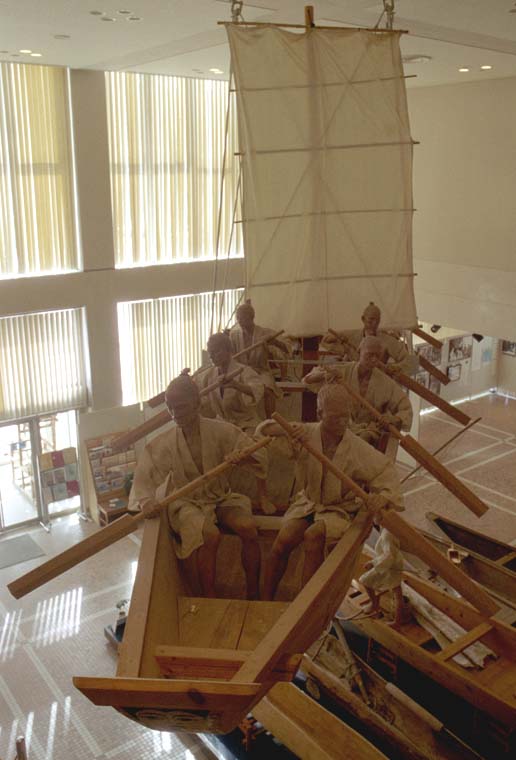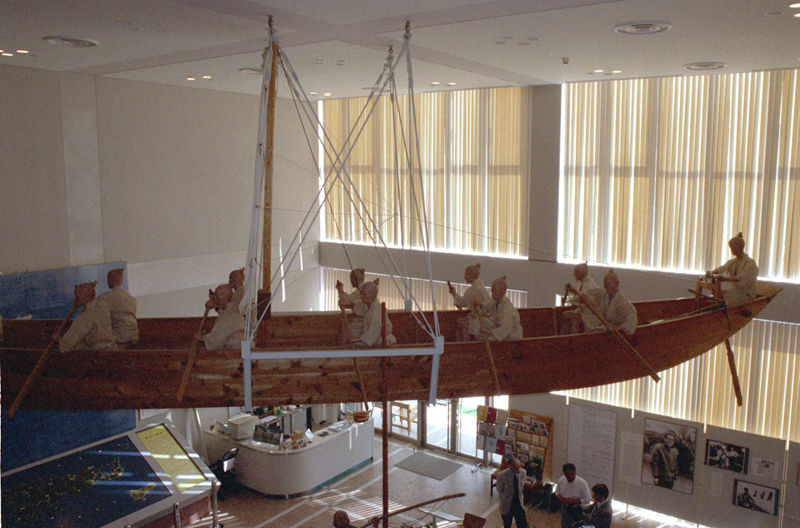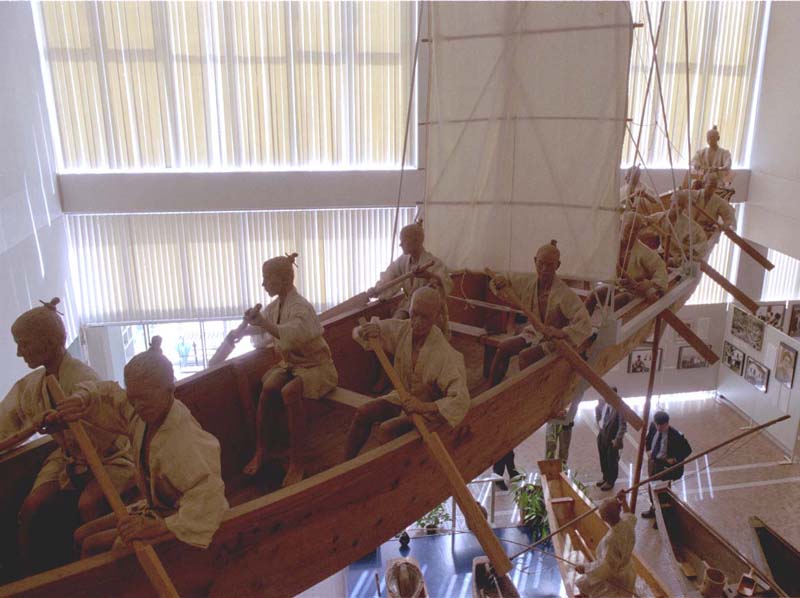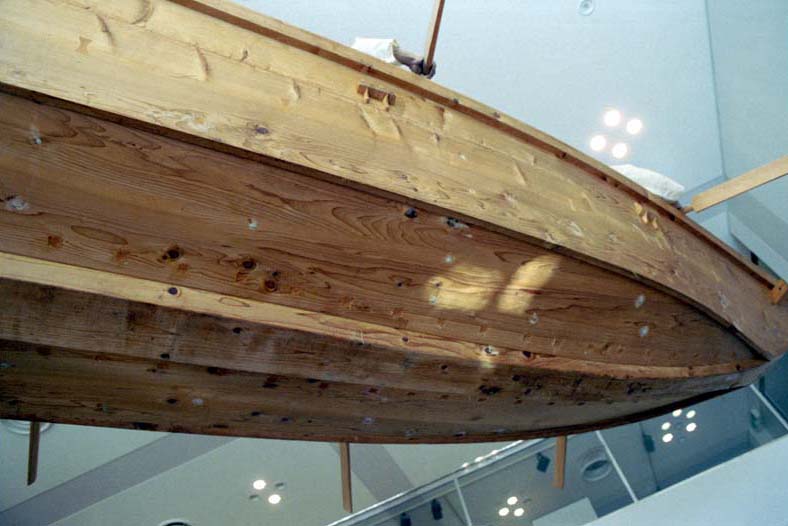




Amami Islands are located in the middle of Satsunan Islands, the chain of islands between Kyusyu Island and Okinawa Islands. Amami had been the dependency of Ryukyu Kingdom since 13th century then colonized by Satsuma seiguneury in early 17th century.
This Voyaging canoe is called Kubaya or Yahirobune. Yahiro means 8 hiros(1hiro=about1.8 meter) and bune means ship. Therefore Yahirobune means the ship of about 14.4 meters.
You can see it as sailing and paddling canoe. It requires 12 paddlers and 1 steersman with single square sail. Pre-modern age people of Amami Islands used this voyaging canoe for trading between their islands and Kyusyu or Ryukyu.
Now there is no Kubaya available for voyaging and of course, there is nobody who can use this type of voyaging canoe. Few years before, a curator of this museum built lesser type of Amami’s traditional sailing canoe “Itatsuke” and sailed it around Amami-Oshima Island.
Itatsuke (or Itatsukibune) is another traditional voyaging canoe of Amami Islands. It was used for transport ship of sugar. Satsuma did tyranny in the Islands and they enforced islanders the monoculture of sugar. The Amami sugar was a big resource for Satsuma to make money. Satsuma finally completed the Meiji revolution and capsize Tokugawa dynasty. Satsuma’s General Saigo Takamori lived in the islands for a few years and had his private education classes for islanders. Later one of his student became first French literary in Japan.
There are two master-builders of Itatsuke in Amami now(see this link).
http://scofits.mo-blog.jp/
Itatsuke racing is popular among Amami people. Itatsuke is also used for the education in Koniya Juinor High school in Amami-Oshima Island. Students paddles Itatsuke to cross Oshima channel between Amami-Oshima Island and Kakeroma Island every year.
Unfortunately there is no Itatsuke activity for tourists now.
picture1-3 full scale Kubaya model front and side
picture4 Kubaya's bottom. Master-builder Tsuboyama Jr. points that constitutions of Amami's voyaging canoes are very similar to North American traditional kayaks.
picture5 Kubaya's stern. Steering paddle is very unique.
(Amami Museum at Amami-City, Kagoshima)
これは、かつて奄美で使用されていた、「クバヤ」あるいは「八尋船」と呼ばれる航海カヌーです。奄美にはこれより小さな「イタツケ(板付き舟)」と呼ばれる帆漕カヌーがあるのですが、クバヤもイタツケも日本列島の伝統的な小型船舶に共通の構造を備えています。すなわち、船底を一つの木材から削りだして、これに他の部材を加えていくというものです。これはハギ船と呼ばれます。ハギとは、板材をはぎ合わせるという意味です。継ぎ接ぎ(つぎはぎ)というのは、代表的な木材の接合法のことなんです。
船底から見た画像でわかるように、この船は西洋の船とは木材の使い方が全く異なっています。これがハギ船の船底なのです。船底を一つの部材から削りだして、それに他の部材を組み合わせる方法はミクロネシアやポリネシアの大型カヌーでも広く見られるものです。
面白いのは舵で、船底に穴が開いていてそこから舵が出ているというのは私は初めて見ました。

